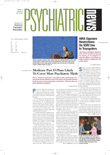The pieces of the puzzle are coming together—some of them anyway—toward a true neurobiological understanding of mental disorders, said Thomas Insel, M.D., director of the National Institute of Mental Health (NIMH).
In an address to psychiatrists at APA's 2005 annual meeting, Insel cited recent ground-breaking research from which has emerged the beginnings of a molecular pathophysiology for depression—from genes to cells to systems to functioning.
He described an often-cited study by Caspi and colleagues in the July 2003 Science showing that a functional polymorphism in the promoter region of the serotonin transporter (5-HTT) gene was found to moderate the influence of stressful life events on depression. Individuals with one or two copies of the short allele of the 5-HTT promoter polymorphism exhibited more depression and suicidality in response to stressful life events than individuals with the long allele.
“This is a gene-environment interaction, and it suggests one way in which these genetic variations may play out,” Insel said.
A new report by psychiatrist Daniel Weinberger, M.D., and colleagues at the NIMH builds on the finding to extend it to structural changes in a specific area of the brain.
In a paper published online in May in Nature, Weinberger and colleagues used neuroimaging to show reduced gray matter volume among individuals with the short form of the 5-HTT gene in limbic regions of the brain critical for the processing of negative emotion, especially the perigenual cingulate and amygdala—areas that had previously been associated with decreased volume and changes in metabolism among individuals with depression.
The researchers then performed functional MRI analysis of those regions as subjects were being shown images of a threatening face. In individuals with the long form of the 5-HTT gene, there was increased activity in the perigenual cingulate and amygdala, but in those with the short form there was significantly decreased activity directly related to the variation in temperamental anxiety experienced by subjects.
“The concept is that having this variation along the course of development leads to changes in cells—in this case, cells that express the serotonin transporter,” Insel explained. “That could lead to a different pattern in the way connectivity happens in the brain. At the systems level it would give you a very different way of processing negative stimuli and make you vulnerable for a complex disorder such as depression.
“This begins to provide a molecular pathophysiology [for depression] from genes to cells to systems to behavior,” Insel said.
